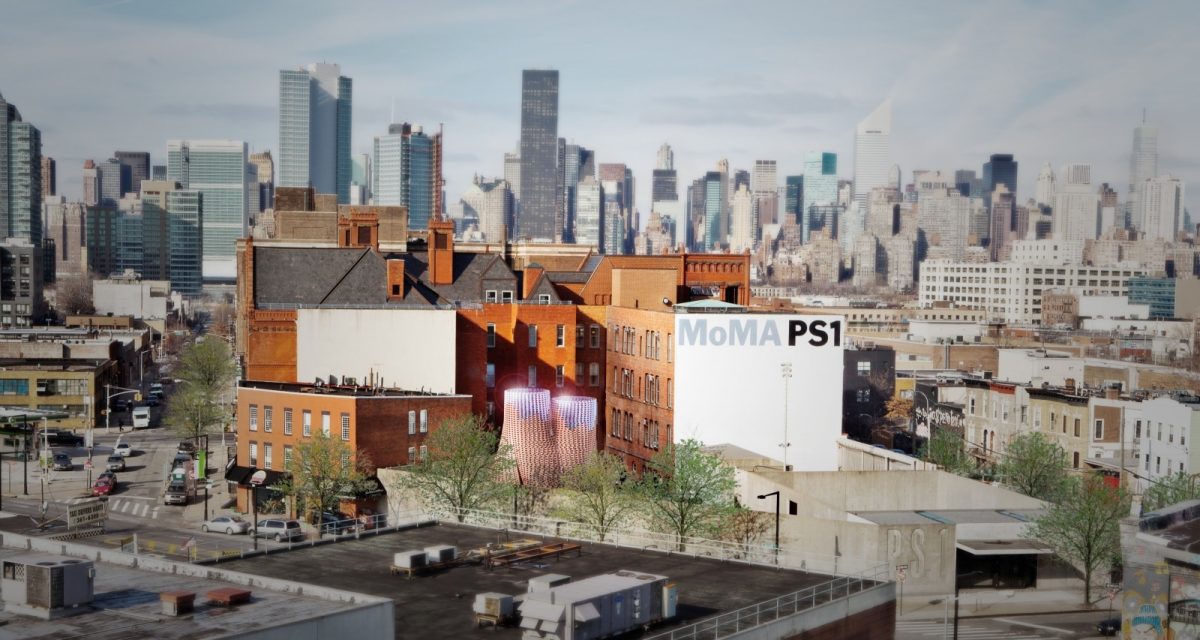In 2014 a project called Hy-Fi was designed and created by the New York architectural office “The Living.” It was led by David Benjamin and was chosen as the winner of the “Young Architect’s Program.” Hy-Fi is a cluster of circular towers over 12 meters tall, formed using 10,000 bricks that were naturally grown from shredded mushroom mycelium using advances in biotechnology combined with cutting-edge computation and expert engineering. The brick production required no energy and produced no waste or by-products. After three months of cultural events, the entire structure was disassembled and the bricks were decomposed down to compost. Compostable Towers
The structure, constructed entirely from recyclable materials that were obtained from the firm Ecovative. They grew the bricks that formed the base of the tower using a combination of agricultural byproducts and mushroom Mycelium which is naturally digestive glue. The bricks were created from fungus-enriched cornstalk wastes that were stained red with an organic dye. It sounds incredible but it is true! The material is revolutionary and sustained this temporary structure throughout the event schedule.
The upper section of the structure was made from reflective bricks that were produced using a specially developed mirror film. Initially, these were used as growing trays for the organic bricks but were later installed at the top of the tower to help bounce light down inside. Gaps occurring in the brickwork helped to naturally ventilate the interior space using the stack effect which draws cool air in at the bottom and pushes hot air out at the top.
New York studio, The Living won 2014, MoMA PS1 Young Architects Program competition with this unique structure and its design. David Benjamin’s cluster of towers made entirely from natural materials was the winning entry of the MoMa’s summer event in Queens.
MoMA curator Pedro Gadanho said: “This year’s YAP winning project bears no small feat. It is the first sizeable structure to claim near-zero carbon emissions in its construction process and, beyond recycling, it presents itself as being 100 percent compostable.” “Recurring to the latest developments in biotech, it reinvents the most basic component of architecture – the brick – as both a material of the future and a classic trigger for open-ended design possibilities,” he added.
The tower has also been referred to as the “mushroom tower.” It is the largest structure to be built with mushroom material to date. “Mushroom packing” has also emerged from this design. It is created by letting the mycelium grow around clean agricultural waste, such as corn stalks or husks. Over a few days, the fungus fibers bind the waste together, forming a solid shape. It is then dried to prevent it from growing any further. Additionally, mycelium bricks have been produced from this project.
A mycelium brick is an organic brick that is formed from organic waste and the mycelium of the fungus. It is a natural fungi material with industrial-level strength that has been explored as a potential building material. The mycelium of fungus refers to the fragile root-like fibers of fungus that live underneath the ground. Mycelium is 100% organic, compostable, and biodegradable. When it is dried, it becomes extremely durable and resistant to water, mold, and fire. Spawn (mushroom spores) are collected and placed in a PDA material for initiating the growth of mycelium fibers from the spores. These fibers are transferred into the substrate and allowed to grow for a few days. This emerging material could be used as the building blocks for the construction of future homes!
What sets mycelium apart from other materials is its ability to regenerate at a quick rate. It can be used for 3-D printing and is non-toxic, insulating, and all-natural. Mycelium has the potential to create a new paradigm for design in the building industry. To date, mycelium has been used solely for packaging purposes. Ecovative Design Company has discovered ways to use mycelium for more than packaging. They are already creating alternative meat products, animal-free leather, skincare products, and more. With their fabrication process, they can control the texture, strength, and porosity of mycelium-based products.
Another innovative way to create building materials is called “biocycling.” This process occurs when demolition waste is broken down and combined with mycelium to add industrial strength that binds the material as it grows. Then, the combined elements are compressed to create new building materials. These materials can then be cut into bricks or used as insulation.
It is plain to see that the building industry is being influenced heavily by the introduction of natural, compostable materials. Research and technology have led us towards a path of using completely natural building materials. In the very near future, you may find yourself inside a structure made entirely of mushroom by-products! How incredible! The architectural industry is embracing these new materials and is ready to put them to good use.


